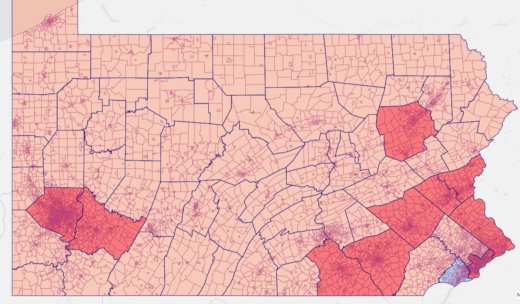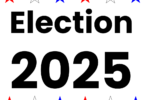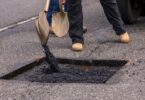By Nick Field | Pennsylvania Capital-Star

A high-water mark, or an indication of a red tide in November? That’s the key question as we examine the Pennsylvania Republican Party’s latest voter registration gains.
I actually originally chose this moment because it’s about halfway between my last update in April and the state’s voter registration deadline in October. Instead it’s a chance to chronicle what the trends were right before the Democratic Presidential nomination shifted from Joe Biden to Kamala Harris; as well as track how this new Harris/Trump race does or does not move the numbers over the next three months.
Back in April, the Democratic registration advantage statewide stood at D+397,241. Today that lead dwindles to D+360,982: as Dems lost 2,214 registrants, while Republicans gained 34,045 and Independents added 41,475.
Where did those GOP gains come from, and what does that tell us about the race ahead? Let’s dive into the numbers and try to find out.
A quick note: I explore our changing voter trends by tracking the gains one party accumulated in registrations over the other party. For example, R+500 means that the Republican Party gained a net 500 more registered voters in that county than the Democratic Party did over this period, while D+500 indicates the opposite.
Central
- Blair: R+513
- Bradford: R+310
- Cameron: R+6
- Centre: R+48
- Clearfield: R+431
- Clinton: R+147
- Columbia: R+290
- Elk: R+183
- Huntingdon: R+107
- Juniata: R+69
- Lycoming: R+380
- McKean: R+116
- Mifflin: R+211
- Montour: R+17
- Northumberland: R+242
- Potter: R+51
- Snyder: R+101
- Sullivan: R+62
- Tioga: R+149
- Union: R+44
It’s been a relatively sleepy summer out here in Central Pennsylvania, but the excitement is sure to come back in the fall when students return to Penn State and Bucknell Universities. So if there’s any renewed Democratic enthusiasm among young people, we should see some signs there. Conversely, if the War in Gaza is still ongoing, we’ll likely witness plenty of protests as well.
Northeast
- Carbon: R+441
- Lackawanna: R+875
- Luzerne: R+1,376
- Monroe: R+557
- Pike: R+289
- Schuylkill: R+531
- Susquehanna: R+156
- Wayne: R+283
- Wyoming: R+128
Ever since Donald Trump’s 2016 upset, when Hillary Clinton lost enough votes in the Scranton/Wilkes-Barre corridor alone to cost her the entire commonwealth, I’ve kept a close eye on this region. Native son President Joe Biden was supposed to get back to those Obama-level margins here, but he ended up securing only a modest three- point improvement in Lackawanna and Luzerne counties.
At the same time, without Trump on the ticket, Democratic statewide candidates did quite well here in 2018 and in 2022. So it remains to be seen whether Harris can perform on par with them there against Trump.
Moreover, it appears Luzerne County is on track to flip from a Democratic plurality to a Republican plurality by the time we get to October. The Dem advantage is down to just 1,370 there, a far cry from their 45,467 margin when I started tracking all this back in May 2015.
Northwest
- Clarion: R+179
- Crawford: R+400
- Erie: R+919
- Forest: R+16
- Jefferson: R+228
- Mercer: R+570
- Venango: R+203
- Warren: R+176
Speaking of cities where Harris may need to improve upon Biden’s performance, we also have Erie. The lakeside county is a bellwether of the commonwealth, supporting the statewide winner in every Presidential election since 1992. As a result, it’s bound to be visited several times by both party’s candidates over these next 100 days.
South Central
- Adams: R+372
- Bedford: R+209
- Cumberland: R+193
- Dauphin: R+545
- Franklin: R+550
- Fulton: R+93
- Lancaster: R+1,168
- Lebanon: R+348
- Perry: R+147
- York: R+1,319
I like to call Lancaster and York The Big Red Machines of Pennsylvania, as they represent the most populous red counties in the commonwealth. In the Trump Era, however, these counties began to drift leftward, to the point that Josh Shapiro nearly won Lancaster during the 2022 gGubernatorial election.
Therefore, if Harris loses ground in the rural areas of Central, Northeast, Northwest and Southwest Pennsylvania she’s got a chance to make up some of that lost ground in the South Central portion of the state. To wit, Harrisburg and its neighboring suburbs in Dauphin and Cumberland Counties are a prime opportunity for her here.
Southeast
- Berks: R+1,487
- Bucks: R+1,974
- Chester: R+268
- Delaware: D+75
- Lehigh: R+1,228
- Montgomery: R+194
- Northampton: R+1,248
- Philadelphia: R+4,396
For all intents and purposes, this region may be the ballgame. That’s why Republicans must be thrilled with their gains here, highlighted by their flip of Bucks County, which returns to a GOP plurality for the first time since the spring of 2008. Remember, Biden won Bucks by four and a half points in 2020, and Harris almost certainly has to improve upon that margin.
The one blue dot on this entire map is here in Delaware County, the sole county to see Democratic registrant gains since April. On the other hand, Pennsylvania Republicans saw their largest numerical growth in Philadelphia, a place where Democrats should obviously be running up the score by this point in the election season.
Southwest
- Allegheny: R+2,083
- Armstrong: R+405
- Beaver: R+704
- Butler: R+859
- Cambria: R+686
- Fayette: R+867
- Greene: R+230
- Indiana: R+342
- Lawrence: R+498
- Somerset: R+314
- Washington: R+998
- Westmoreland: R+1,805
The voter rolls in this Appalachian region of Pennsylvania just continue to get redder and redder. The Southwest famously fueled Trump’s victory in 2016, yet four years later Biden was able to chip away at Trump’s margins in counties like Beaver, Butler, Washington and Westmoreland. So Trump will be looking to reverse those trends and put up monster numbers here against Harris.
Meanwhile, any Harris win will depend in part on running up a massive tally in Pittsburgh and the rest of Allegheny County. Four years ago, Biden posted an impressive 146,761 vote margin here, the third-highest in history behind only FDR in 1936 and LBJ in 1964. She’ll likely need an even better performance in the Steel City to carry PA.
The suburbs will be pivotal
In 2020, Joe Biden took back the Keystone State by outrunning Hillary Clinton in the Commonwealth’s suburbs and – to a lesser degree – the state’s rural regions. So even while Donald Trump performed better in Philadelphia, his 44,292 vote victory in 2016 became a 80,555 vote loss in 2020.
With Harris at the top of the ticket now, those trends will likely reverse, with Trump looking to replicate his 2016 rural margins, while Harris seeks to reach Obama-level support in the cities. As a result, this contest will likely come down to the suburbs.
The recent high-water mark for a Democratic margin out of Philadelphia was Barack Obama’s 492,339 vote advantage in 2012. For comparison’s sake, Hillary Clinton and Joe Biden racked up 475,277 and 471,050 margins in 2016 and 2020 respectively. Democrats are hoping that with another Black nominee at the top of the ticket, they’ll be better able to close that gap.
Perhaps more important, however, will be the Dems’ advantage in the collar counties of Bucks, Chester, Delaware and Montgomery. After Obama posted a 123,327 vote lead here in 2012, Clinton grew it to 188,353, while Biden expanded that advantage to 293,094. Given the circumstances, Harris simply must match and improve upon Biden’s numbers here.
So it’s worth pointing out that the best recent performance in the Philly suburbs was by Josh Shapiro in the 2022 gubernatorial contest. In a race with less turnout than a Presidential election, Shapiro put together a 388,273 vote performance, besting even Ed Rendell’s 374,243 vote advantage during the 2006 blue wave.
So if Shapiro does indeed win the Veepstakes, the Philadelphia suburbs will be a key reason why.
Yet Pennsylvania isn’t just the City of Brotherly Love and its suburbs. For example, now that Biden is out of the race, Erie and Scranton are especially tempting targets for the Trump-Vance campaign. Conversely, the Hispanic voters in the Lehigh Valley cities of Allentown and Reading present an enticing opportunity for the Harris team.
I’ll have more on all this when we reach the voter registration deadline in October, but for now we’ll wait to see how a suddenly unsettled race unfolds.
Pennsylvania Capital-Star is part of States Newsroom, a network of news bureaus supported by grants and a coalition of donors as a 501c(3) public charity. Pennsylvania Capital-Star maintains editorial independence. Contact Editor Kim Lyons for questions: info@penncapital-star.com. Follow Pennsylvania Capital-Star on Facebook and Twitter.








